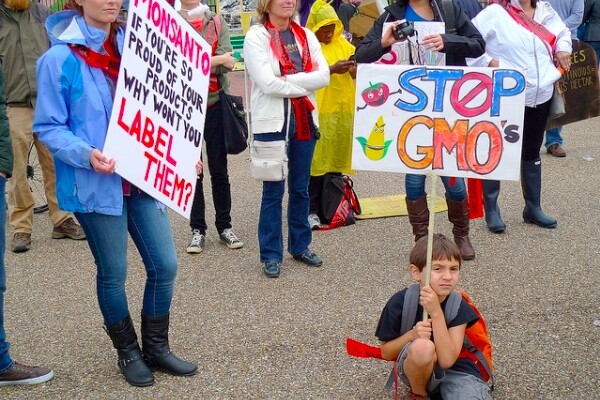Is The Fight For GMO Labeling Over?

Lost in the shuffle of last Tuesday's election news coverage, which focused almost entirely on Republicans regaining the Senate and the continuing spread of marijuana legalization -- perhaps the latter taking place in some small part to make the former's occurrence easier to swallow -- was the fact that two ballot initiatives were being voted on regarding the labeling of GMOs. One was in the state of Colorado, the other in Oregon.
They both lost.
That makes it a record of 4-0 for those trying to keep mandatory GMO labeling from happening. So, where does the fight go from here?
First, a postmortem: Both initiatives were worded roughly the same, with the proposed labels needing to contain some version of the phrase "genetic engineering," as was the case with previous attempts in California (in 2010) and Washington state (in 2012). Colorado's Proposition 105 lost handily, with 66 percent of voters saying "No, thanks" to the mandatory labeling. The vote over Oregon's Measure 92, meanwhile, was the definition of a squeaker, with a mere 51% of voters saying there shouldn't be mandatory labeling.
(Perhaps more than anything, this was a case of the anti-labeling campaign flexing their monetary muscles: They outspent the Oregon pro-label campaign by three times, but outspent the Colorado attempt by a whopping thirty times.)
So, where does the battle go from here? If the GMO labeling contingent can't get these measures passed in any liberally-minded West Coast state, they're not going to have any better luck elsewhere. And if Oregon can't win the fight even though they received a record $8 million in donations, what are the odds of other pro-labeling groups across the country finding more dough in their coffers?
Now, the pro-labelers aren't going anywhere anytime soon. If anything, the narrow loss in Oregon has them already considering a second attempt there. (Or, actually, a third attempt, seeing as Oregon attempted to label GMOs way back in 2002, but failed miserably, with 70 percent voting against it.) But maybe the next step of the battle is circumnavigating labeling entirely.
Because, actually, last Tuesday wasn't all bad news for anti-GMO folks. In Hawaii, voters in Maui County banned GMO crops from being grown there at all. While the vote wasn't a mandate on the issue (it only won by 1,000 votes), and the ban is only temporary, it's also not completely unique. Two other counties (both in Oregon) had already banned the growing of GMO crops within their borders earlier this year.
That said, bans aren't practical for large sections of the country, meaning the fight over labeling will continue. But how? Nathanael Johnson at Grist.org believes this "madness" can end if mandatory labeling ends up happening outside of voter initiatives. For instance, in Vermont, where the state legislature is attempting to make GMO labeling mandatory in 2015:
My guess is that food makers would slap GMO labels on everything that might have gotten some beet sugar or corn starch in it, just to be on the safe side. We'll have labels on most processed food that's not organic-ish. People will see it everywhere, and then stop seeing it, in the same way Californians have grown numb to the ubiquitous signs, from another initiative, warning them that every coffee shop and power cord contains chemicals known to cause cancer and birth defects.
Of course, there's another option. With Republicans running the House and Senate again, the possibility that something like the bill proposed earlier this year by Kansas representative Mike Pompeo -- which would take the labeling issue out of state hands entirely and make it an FDA matter -- might find its way to President Obama's desk for signature. What happens then is anyone's guess; the President hasn't been too outspoken on the GMO issue. But if he signs it, you can say goodbye to ballot initiatives.
Which might not be the worst thing. It's clear this method of attack by the pro-labeling contingent isn't working. If pro-labelers use $10 to purchase ads, Monsanto and company use $100, and they're not showing signs of going bankrupt anytime soon. Before the election, there was speculation that the Bay Area's soda tax proposal was the last straw, that if it failed to pass in the most liberal part of the country, there was no way it could pass anywhere else. Well, Berkeley ended up passing the tax, so that fight continues. But this round of failed GMO labeling initiatives?
Maybe it's a sign that it's time to change the game plan.


